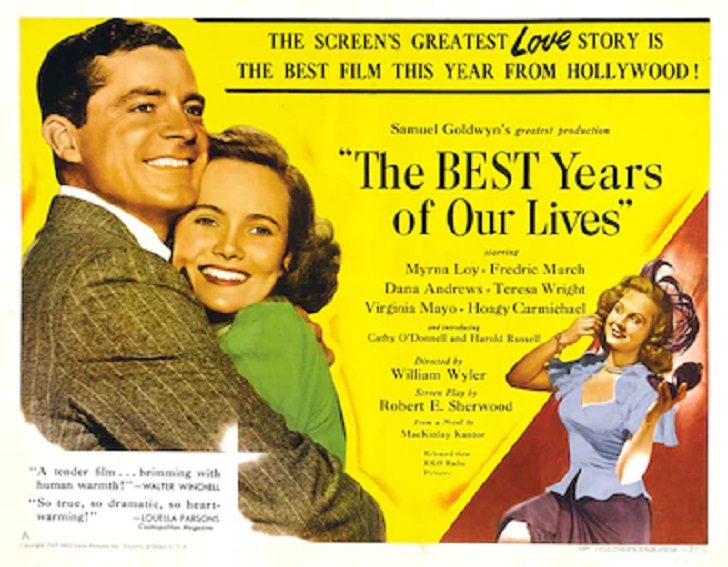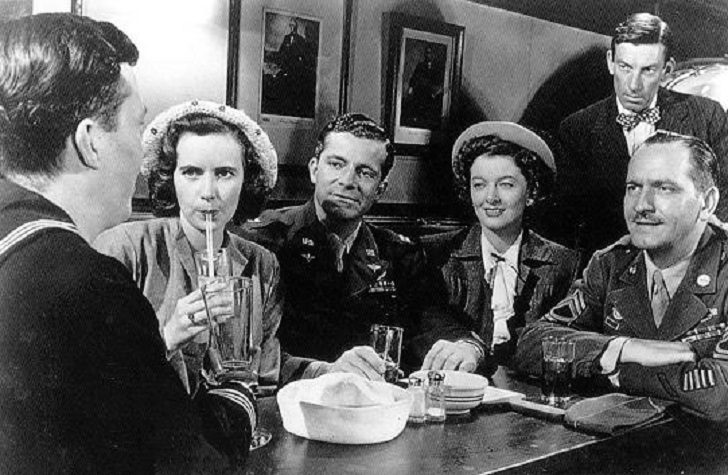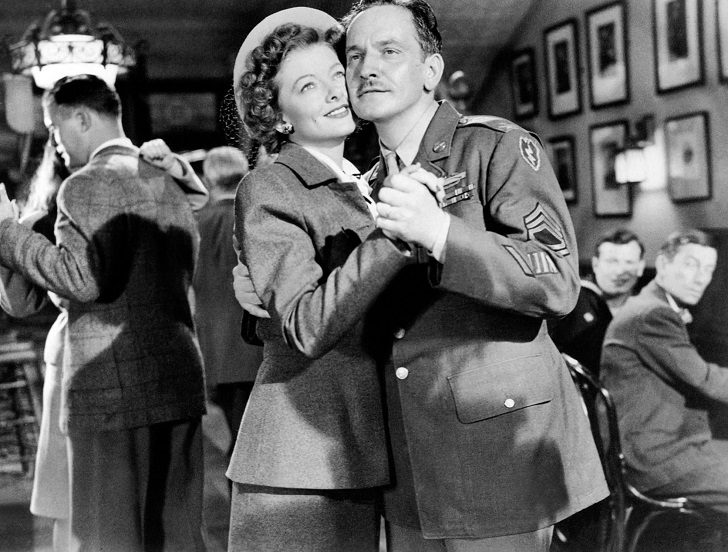"The Best Years of Our Lives" (1946) is producer Samuel Goldwyn's classic, a significant American film about the difficult, traumatic adjustments such as unemployment, adultery, alcoholism, and ostracism, that three returning veteran servicemen experienced in the aftermath of World War II. In more modern times, "Coming Home" (1978) portrayed the same plight of the returning serviceman.
The germinal idea for the literate, meticulously-constructed film came from a Time Magazine pictorial article (August 7, 1944) that was then refashioned into a novel titled "Glory for Me" by commissioned author MacKinlay Kantor. Kantor's blank-verse novel was the basis for an adapted screenplay by distinguished Pulitzer Prize-winning scriptwriter Robert E. Sherwood, his earlier works were "The Petrified Forest" and "Idiot's Delight."
Professional success

Samuel Goldwyn/ TCM | The movie is available on DVD, but there are no bells and whistles, and it calls out for a special edition
The film was a critical and commercial success. It won seven Academy Awards: Best Picture, Best Director, Best Actor, Best Supporting Actor, Best Film Editing, Best Adapted Screenplay, and Best Original Score. It was the highest-grossing film in both the United States and the United Kingdom since the release of "Gone With the Wind" and is the sixth most-attended film of all time in the United Kingdom, with over 20 million tickets sold. In 1989, "The Best Years of Our Lives" was one of the first 25 films selected by the Library of Congress for preservation in the United States National Film Registry for being "culturally, historically, or aesthetically significant."
Plot and analysis

Roger Ebert/ Rogerebert | The film is said to have inspired one of Samuel Goldwyn's famous Goldwynisms
The poignant, moving film realistically transports its present-day audiences back to the setting of the late 1940s, where the film's three typical protagonists return from their honored wartime roles to their past, altered middle-American lives and are immediately thrust into domestic tragedies, uncertainties, conflicts and awkward situations, handicapped, both physically and emotionally, by their new civilian roles. Wyler's Best Picture-winning Mrs. Miniver can be considered a companion piece to this film, from the British perspective.
The title of the movie itself plays a comical and ironic role as it refers to the troubling fact that many servicemen had the “best years of their lives” during the war. However, their days of glory were soon over as they were gradually followed by the experiences that they faced after peacetime America and they were forced to adapt to the much-changed demands and became the victims of dislocating forces. However, it could be argued that the servicemen also gave up and sacrificed 'the best years of their lives such as their youthful innocence and health, by serving in the military and becoming disjointed from normal civilian life.

Everett/ Newyorker | Russell won an honorary Oscar for bringing hope and courage to his fellow veterans through his appearance
The movie centers on the stories of the three men. Al Stephenson (Fredric March), in his 40s, was an infantryman and is now returning to his family and the bank where he worked. Fred Derry (Dana Andrews) was a crew member on a bomber while Homer Parrish (Harold Russell) was a Navy man who lost both hands and now uses steel hooks. The film makes no effort to paint these men as extraordinary—their lives, their characters, and their prospects are all more or less average, and Wyler doesn't pump in superfluous drama. That's why the movie is so effective, and maybe why it doesn't seem as dated as some of the other 1946 dramas.

